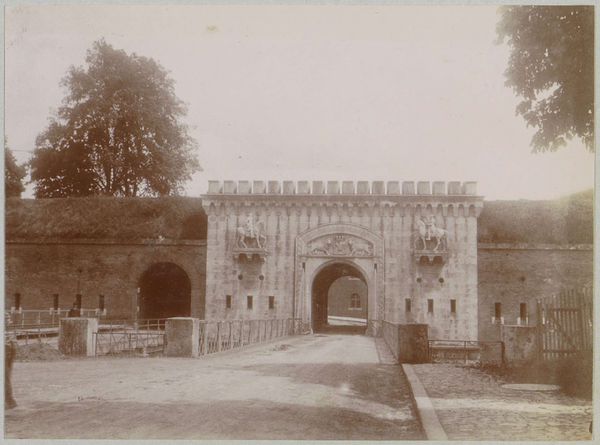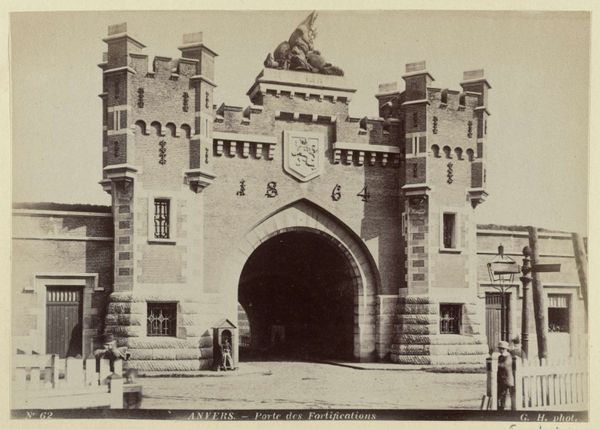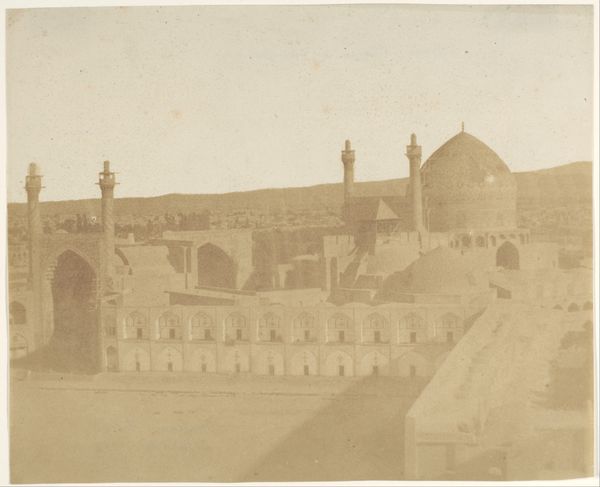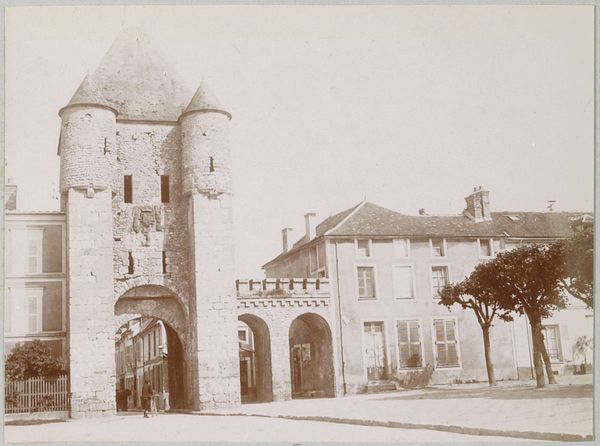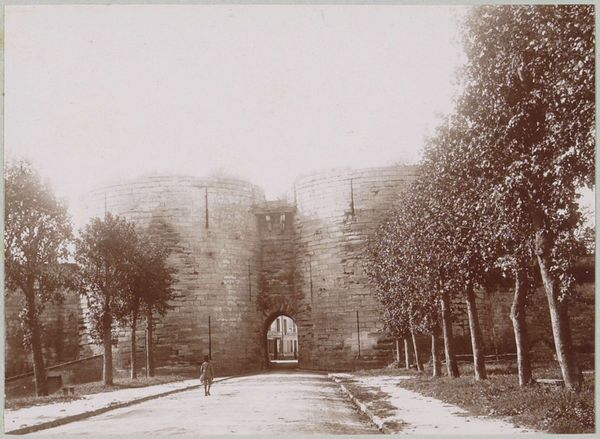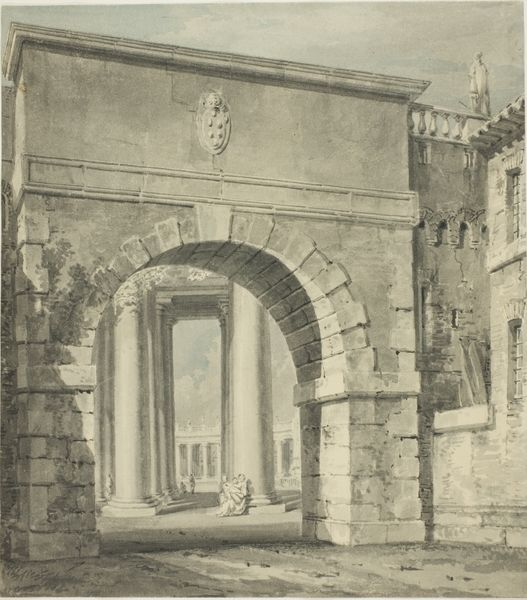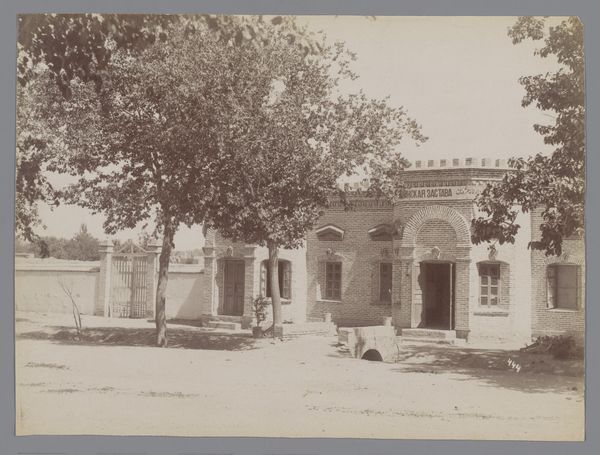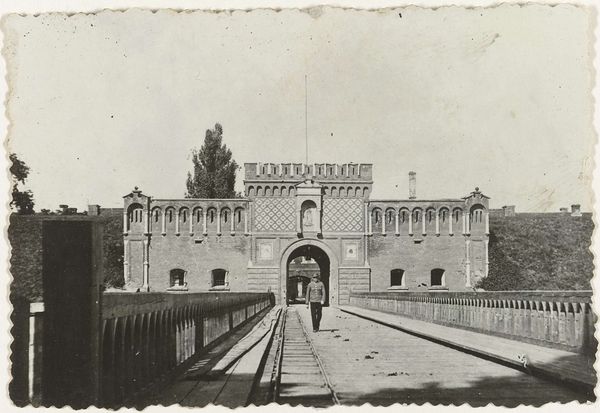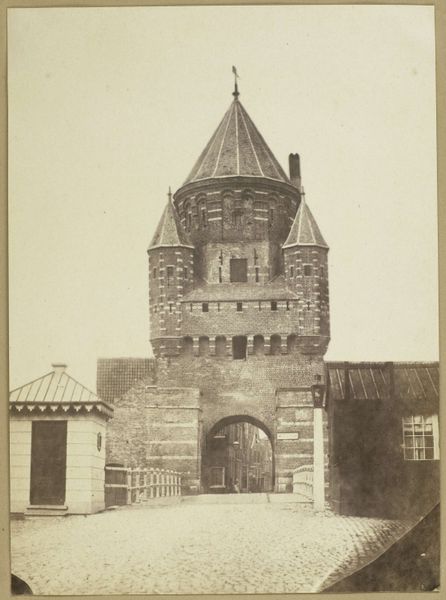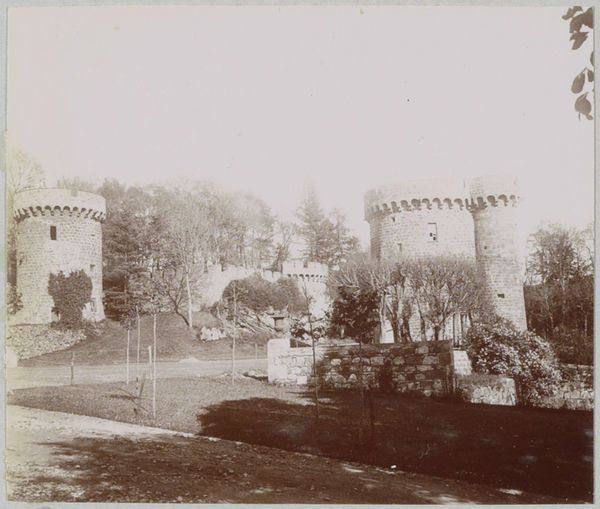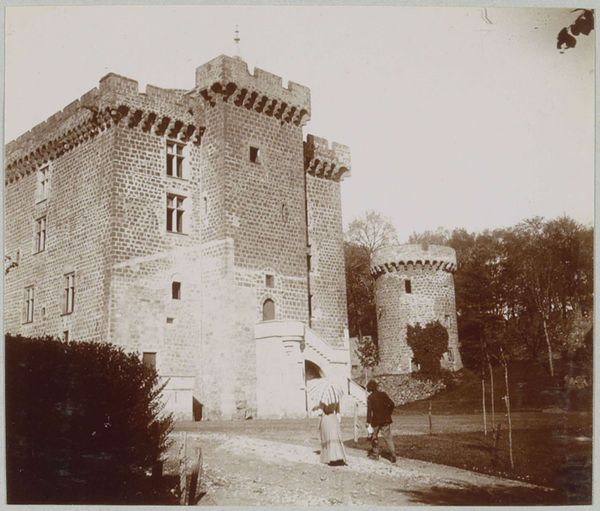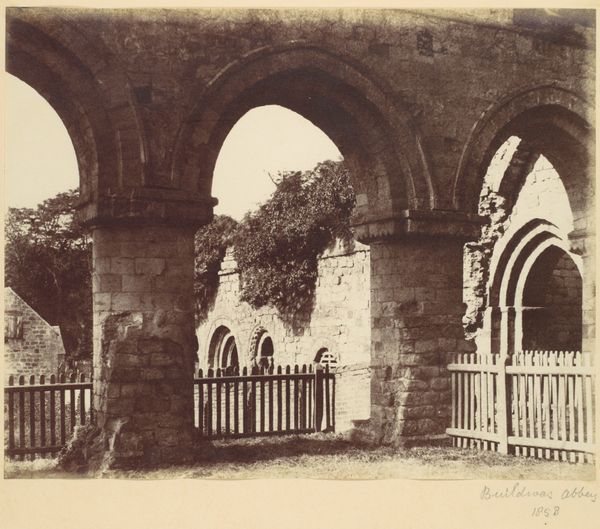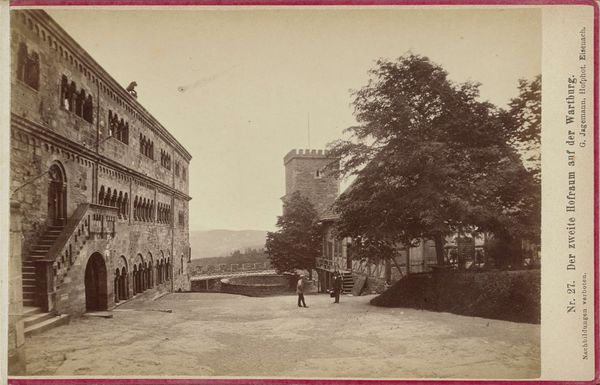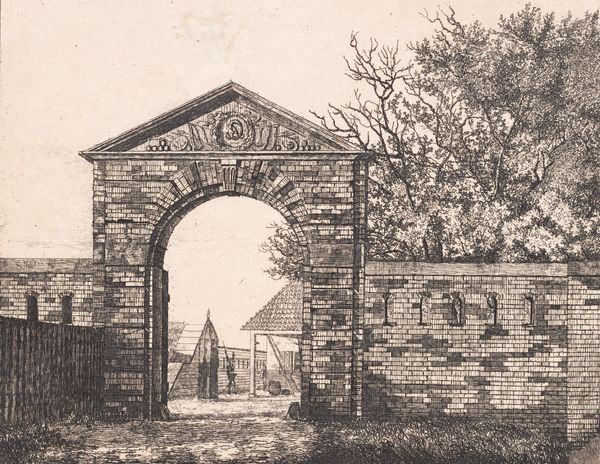
Dimensions: height 90 mm, width 140 mm
Copyright: Rijks Museum: Open Domain
Curator: What a fascinating image! This is an early photograph, perhaps intended as a postcard, titled "Poort Waarachtig, Maastricht," dating from around 1905 to 1919. Editor: Immediately, I notice how much weight the past holds here; it’s steeped in a somber, aged aesthetic with that distinctive sepia tone, casting a retrospective gaze at Maastricht. Curator: Absolutely, and consider the structure of the composition. The stone archway dominates the frame, drawing the eye through the gate to a receding cityscape within. Notice how the light plays on the surfaces, particularly the rough texture of the stones. Editor: Yes, but the city gate signifies more than just architectural presence. Gates are often deeply symbolic as places of crossing thresholds—dividing interior from exterior and citizen from the outsider. Who has access, and why? We see a lone man walking into the frame, hinting at early twentieth century street scenes and city life as spaces of transition for various communities and classes. Curator: An interesting consideration. From a formal perspective, the photograph beautifully balances realism with a slightly romantic aesthetic, evident in the composition. It almost feels painterly. The play of light and shadow is exquisite. The high contrast accentuates the tactile presence of stone. Editor: Indeed, and doesn't it subtly critique the presumed objectivity of photographic images? What appears as a straightforward, 'realistic' depiction of urban architecture, a gate in this Dutch city is far more complicated—laden with colonial connotations if we consider Holland’s own fraught relationship with geopolitical expansion during the depicted time. These seemingly innocuous historical cityscapes must be excavated for layers of meaning embedded within. Curator: An incisive point. Shifting back to the intrinsic features, I am also struck by the contrast between the sharp geometric forms of the gate itself and the soft, diffused light in the background. Editor: This reminds me of how deeply art can reflect social stratification—whose perspective gets privileged? Looking at "Poort Waarachtig," we have to examine the frame in which it was created: what gets exposed versus intentionally excluded, especially concerning gendered, racialized, and classed experiences of public space? Curator: Well, looking closely at the architectural forms, the use of stone gives it a sense of permanence but its decay through aged materiality also speaks of time’s impact. It’s interesting how photography is the ideal medium to capture these paradoxes. Editor: Right! This is also a stark visual reminder about how we continuously reimagine our engagement with a complicated historical and cultural landscape—one photograph containing the traces of various eras converging in Maastricht, and our perception too, changes how its image resonates.
Comments
No comments
Be the first to comment and join the conversation on the ultimate creative platform.
